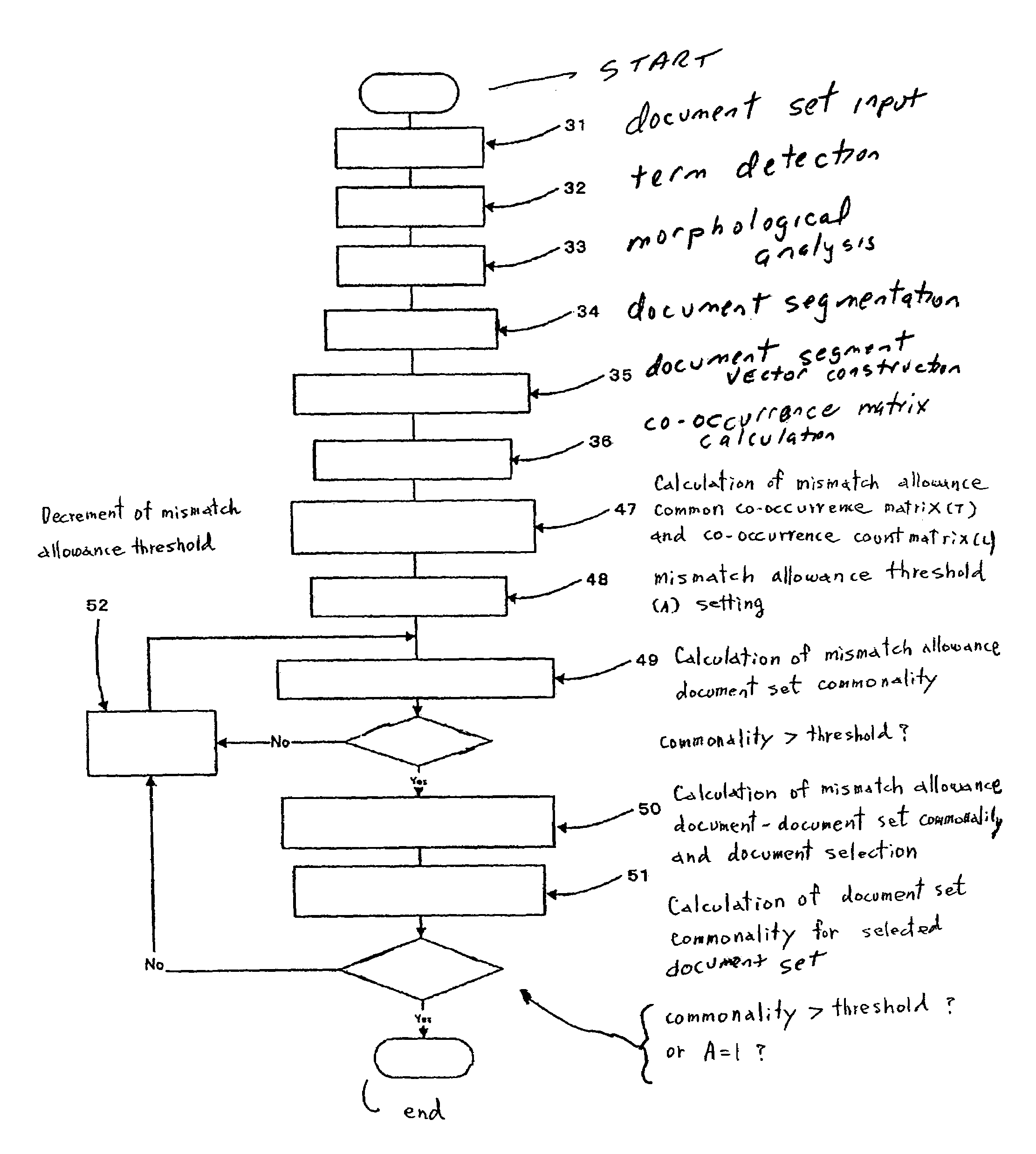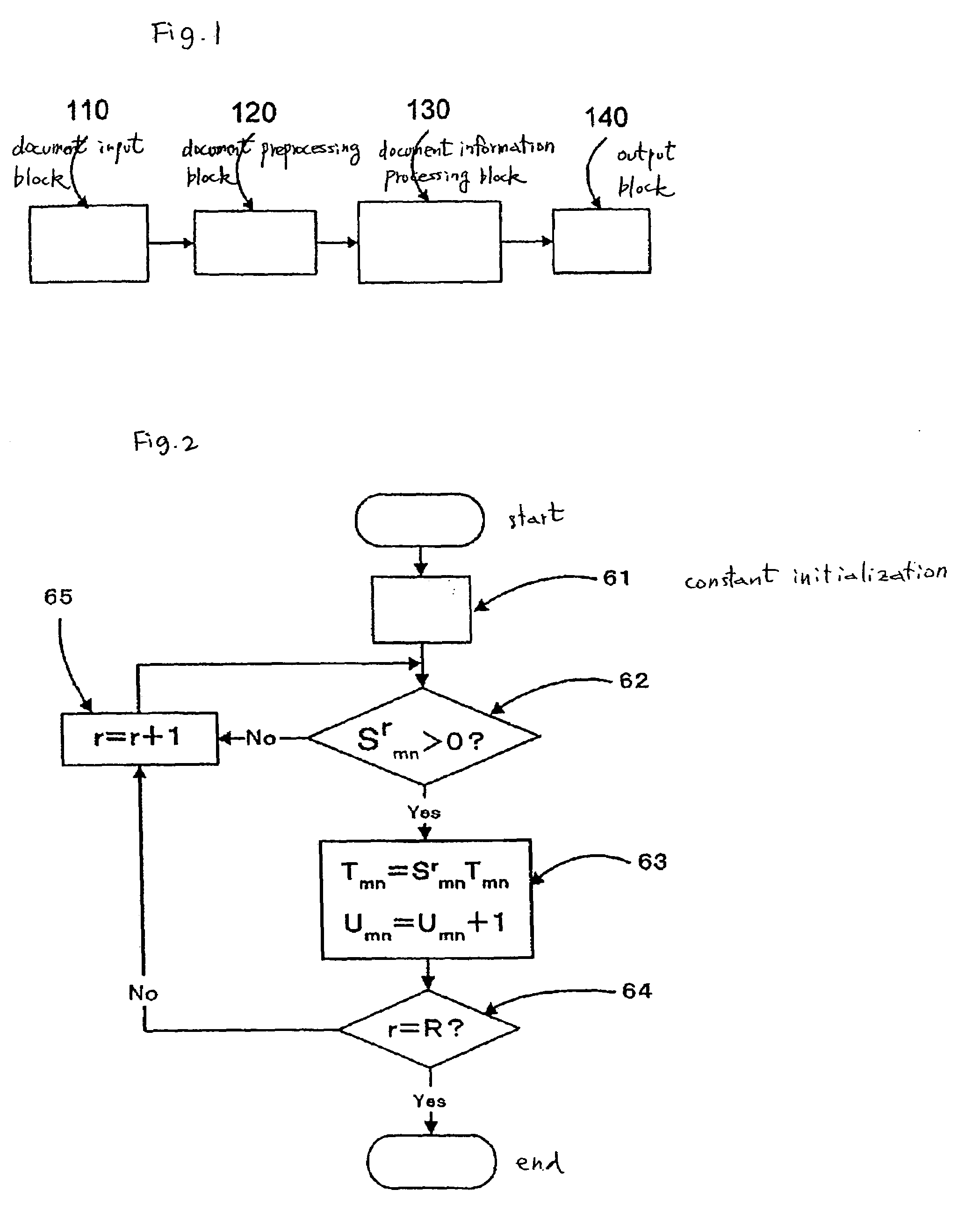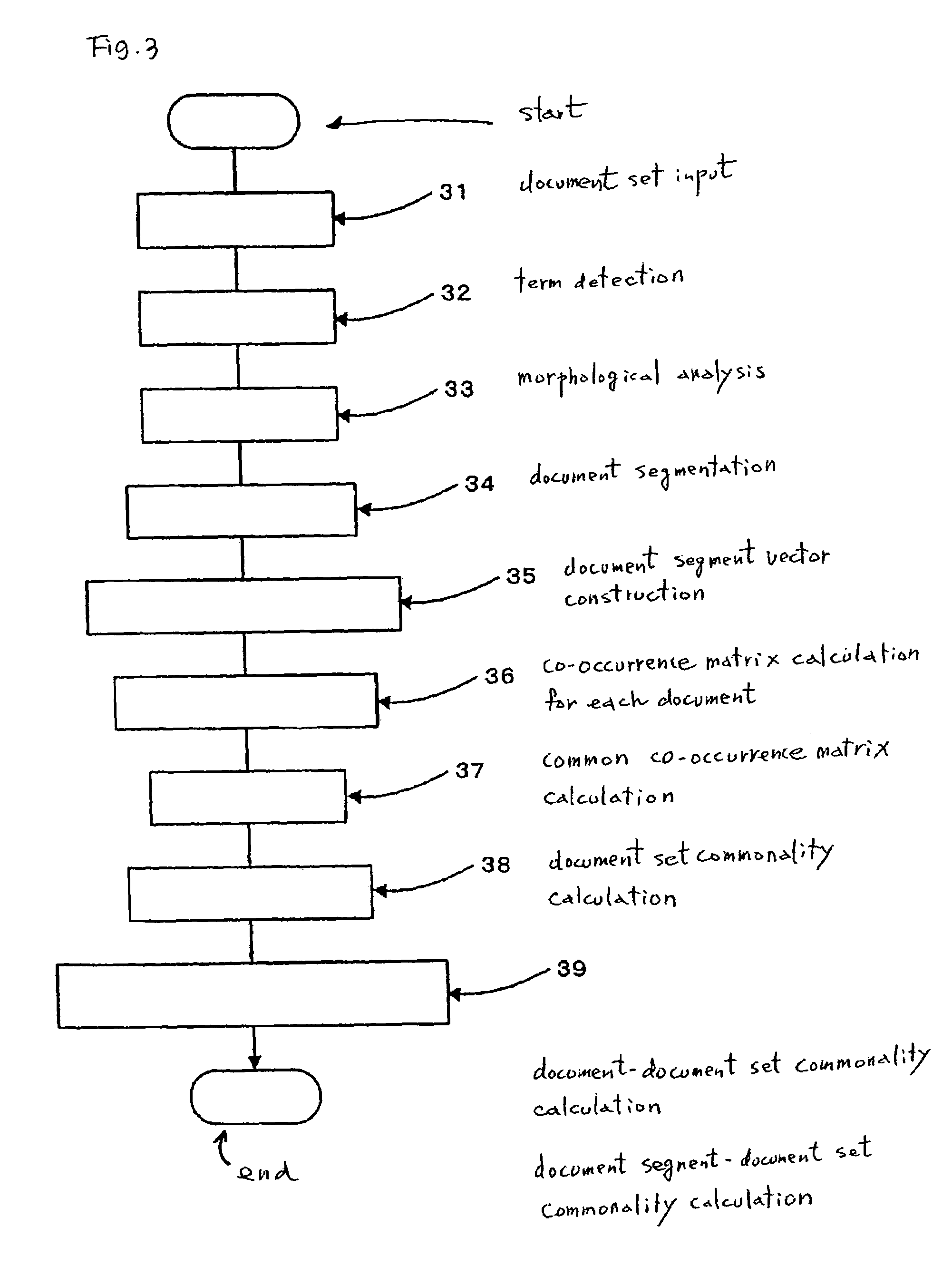Evaluating commonality of documents using segment vector, co-occurrence matrix, and common co-occurrence matrix
- Summary
- Abstract
- Description
- Claims
- Application Information
AI Technical Summary
Benefits of technology
Problems solved by technology
Method used
Image
Examples
first embodiment
[0029]FIG. 3 is a flowchart of steps performed by the apparatus of FIG. 1 in accordance with the present invention in which, for a given document set, a document set commonality indicating how the topics of individual documents are common is calculated, and the individual documents or individual document segments are scored in accordance with the degrees of closeness to a common topic. This method can be practiced in such a way that a program can be run on a general-purpose computer. Referring to FIG. 3, numeral 31 designates a document set input step; numeral 32 designates a term detection step; numeral 33 designates a morphological analysis step and numeral 34 designates a document segmentation step. Furthermore, numeral 35 designates a document segment vector construction step; numeral 36 designates a co-occurrence matrix calculation step for each document; numeral 37 designates a common co-occurrence matrix calculation step, numeral 38 designates a document set commonality calcu...
second embodiment
[0056]FIG. 4 is a flowchart of a second embodiment in accordance with the present invention in which a group of documents having a common topic are extracted from within a document set whose topics are not necessarily common. This method of the invention can be practiced in such a way that a program in which the embodiment is incorporated can be run on a general-purpose computer. Referring to FIG. 4, numeral 31 designates a document set input step; numeral 32 designates a term detection step; numeral 33 designates a morphological analysis step and numeral 34 designates a document segmentation step. Furthermore, numeral 35 designates a document segment vector construction step; numeral 36 designates a co-occurrence matrix calculation step for each document. Numeral 47 designates a calculation of a mismatch allowance common co-occurrence matrix and a co-occurrence count matrix step; numeral 48 designates a mismatch allowance threshold setting step; numeral 49 designates a calculation ...
PUM
 Login to View More
Login to View More Abstract
Description
Claims
Application Information
 Login to View More
Login to View More - R&D
- Intellectual Property
- Life Sciences
- Materials
- Tech Scout
- Unparalleled Data Quality
- Higher Quality Content
- 60% Fewer Hallucinations
Browse by: Latest US Patents, China's latest patents, Technical Efficacy Thesaurus, Application Domain, Technology Topic, Popular Technical Reports.
© 2025 PatSnap. All rights reserved.Legal|Privacy policy|Modern Slavery Act Transparency Statement|Sitemap|About US| Contact US: help@patsnap.com



